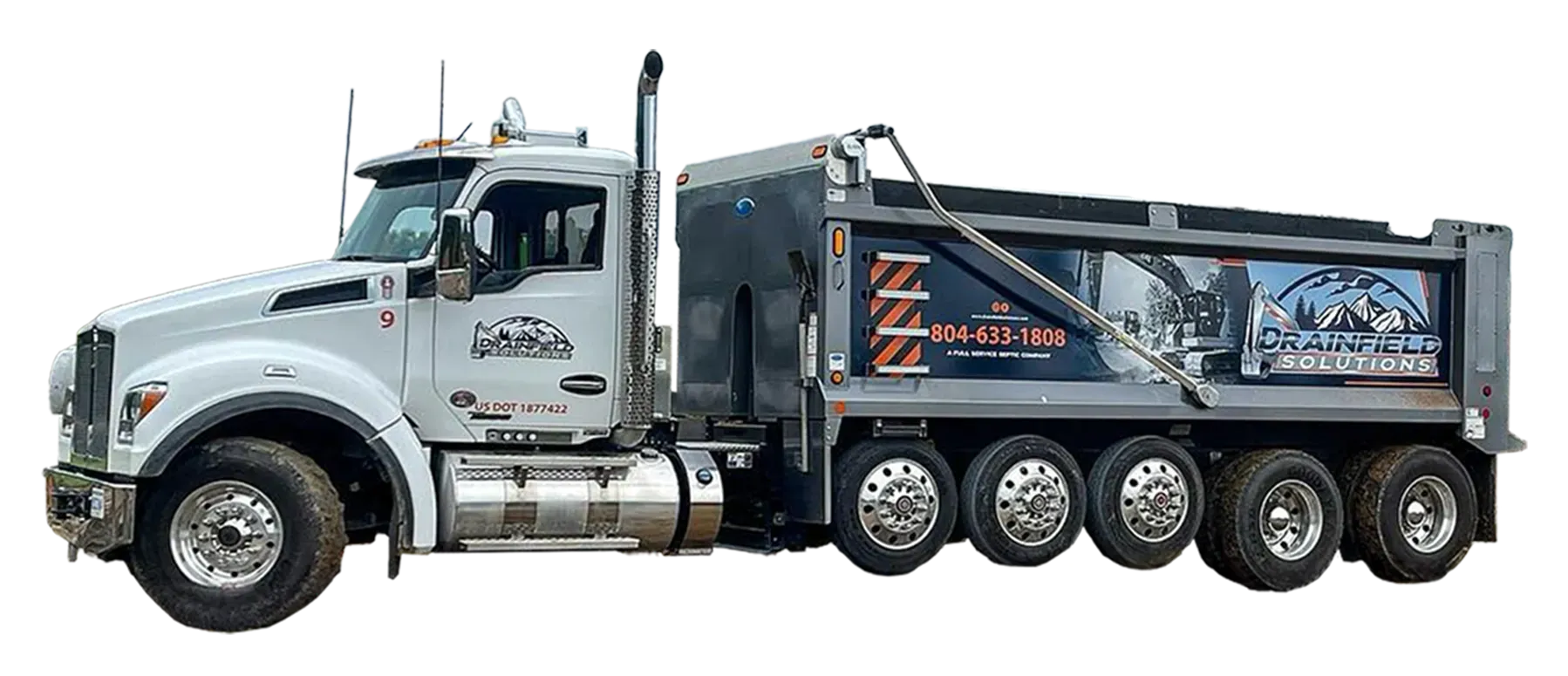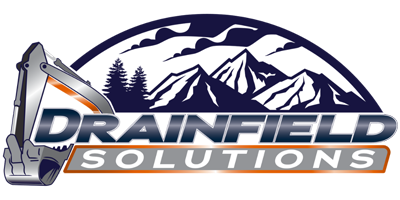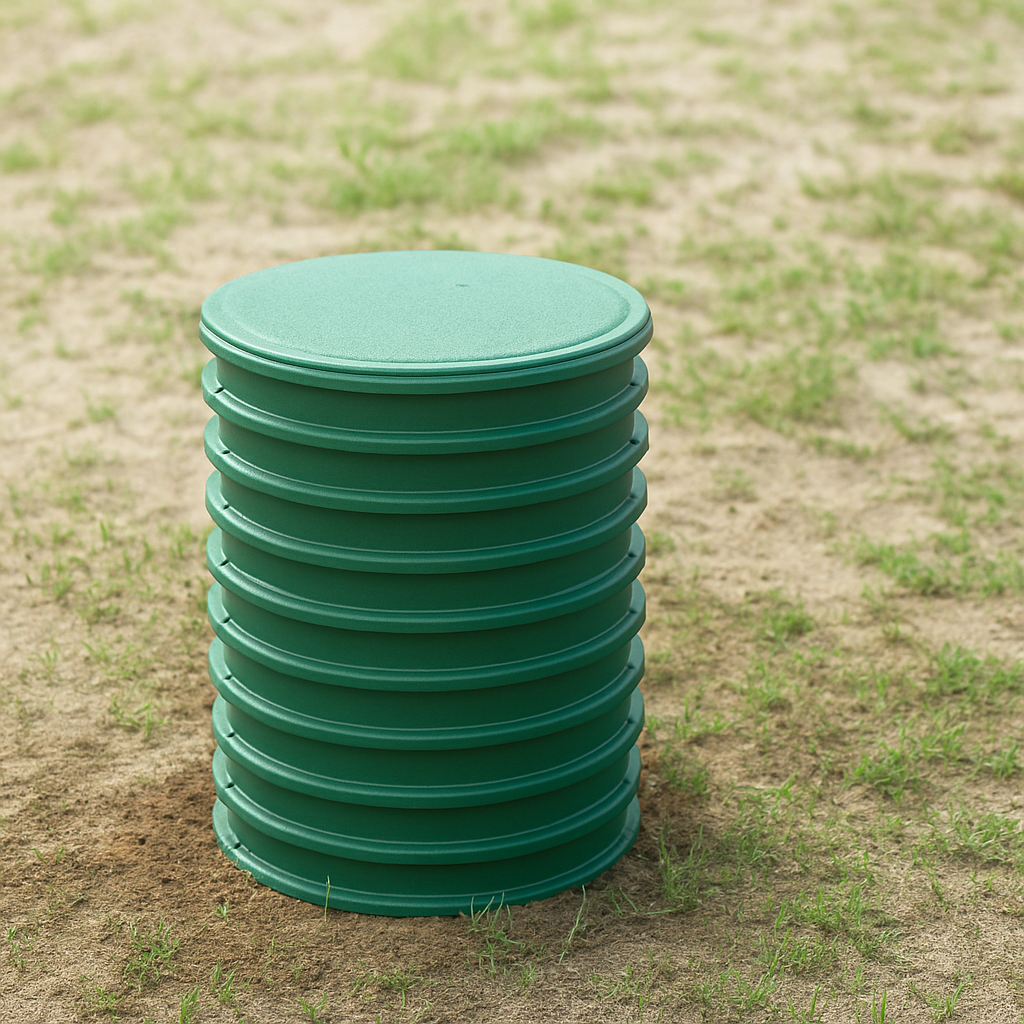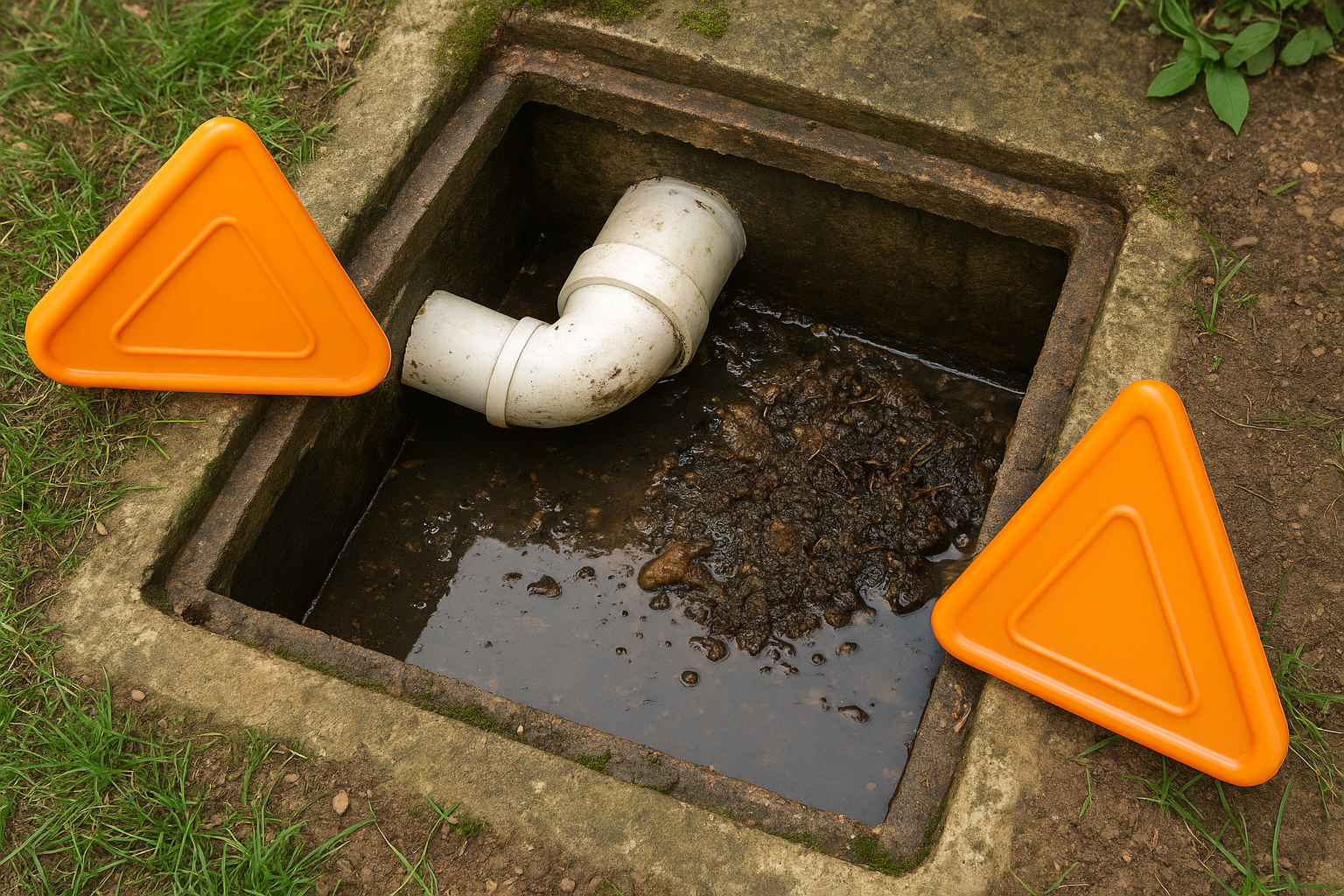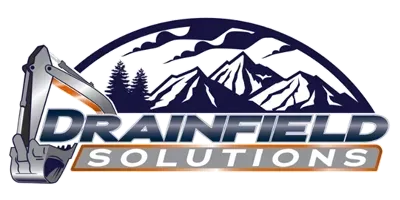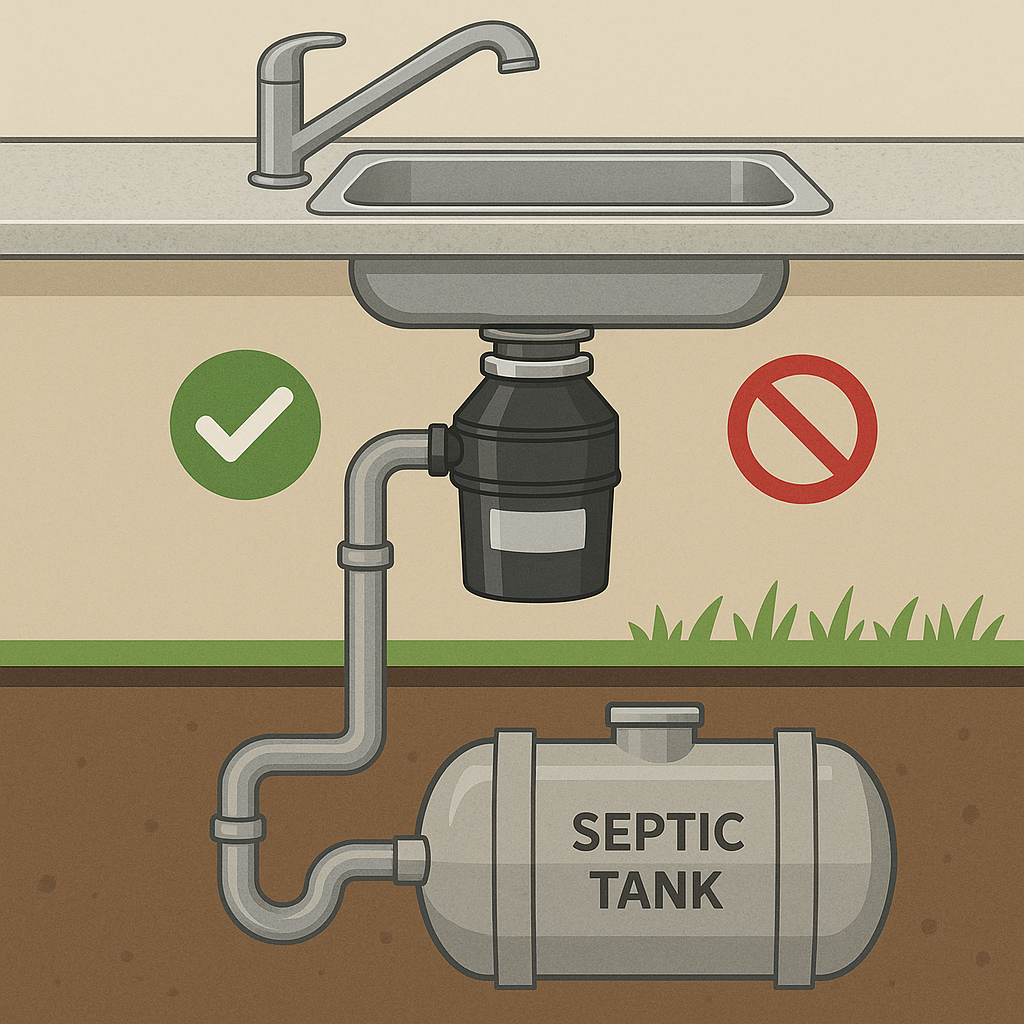
Garbage Disposals and Septic Systems: What Works, What to Avoid, and How to Protect Your Drainfield
August 30, 2025
In many Central Virginia homes, septic systems are essential for wastewater management. While garbage disposals offer convenience in the kitchen, their use in homes with septic systems requires careful consideration. Understanding how garbage disposals interact with septic systems is crucial to prevent costly repairs and maintain system efficiency.
Understanding Septic Systems and Garbage Disposals
A septic system comprises a septic tank and a drainfield (also known as a leach field). Wastewater from your home flows into the septic tank, where solids settle at the bottom, forming sludge, and oils float to the top, forming scum. The remaining liquid (effluent) exits the tank into the drainfield, where it undergoes further treatment by the soil. EPA EPA
Garbage disposals grind food waste into small particles, allowing them to flow into the septic tank. However, these additional solids can accumulate quickly, potentially leading to system overload. The EPA advises that using a garbage disposal can increase the amount of solids in the septic tank, necessitating more frequent septic tank pumping to prevent system failure.
Potential Risks of Using Garbage Disposals with Septic Systems
1. Increased Solid Accumulation
Food particles from garbage disposals contribute to the sludge layer in the septic tank. Excessive accumulation can reduce the septic tank's capacity and lead to solids entering the drainfield, causing clogs and septic system failure.
2. Overloading the Drainfield
When solids escape the septic tank due to overuse of a garbage disposal, they can clog the drainfield pipes. This blockage prevents proper wastewater treatment, leading to backups and potential environmental hazards.
3. Disruption of Bacterial Balance
Septic systems rely on beneficial bacteria to break down waste. Introducing large amounts of food waste can disrupt this balance, hindering the decomposition process and leading to system inefficiencies.epa.gov
Best Practices for Using Garbage Disposals with Septic Systems
1. Limit Garbage Disposal Use
Use the garbage disposal sparingly. Dispose of large food scraps in the trash or compost them instead of sending them down the drain.
2. Avoid Disposing of Certain Items
Do not put grease, oils, coffee grounds, fibrous vegetables (like celery), or non-biodegradable items into the garbage disposal. These substances can cause clogs and disrupt the septic system's function.
3. Regular Septic Tank Pumping
Increase the frequency of septic tank pumping if you use a garbage disposal regularly. The EPA recommends pumping every three to five years, but more frequent pumping may be necessary with garbage disposal use. EPA
4. Use Cold Water During Operation
Running cold water while using the garbage disposal helps solidify any grease or oils, allowing them to be chopped up before reaching the septic tank, reducing the risk of clogs.
Alternative Solutions
1. Composting
Composting food waste reduces the burden on your septic system and provides nutrient-rich soil for gardening.
2. Sink Strainers
Installing sink strainers can catch food particles, preventing them from entering the garbage disposal and, subsequently, the septic system.
Signs of Septic System Trouble
Be vigilant for signs indicating septic system issues:
- Slow draining sinks or toilets
- Unpleasant odors around the drainfield
- Standing water or wet spots near the septic tank or drainfield
- Unusually lush vegetation over the drainfield
EPA
If you notice any of these signs, contact a septic professional immediately to assess and address the problem.
While garbage disposals offer kitchen convenience, their use in homes with septic systems should be approached with caution. By understanding the potential risks and implementing best practices, you can maintain a healthy septic system and avoid costly septic drainfield repairs. Regular septic maintenance and mindful usage are key to ensuring the longevity and efficiency of your septic system.
For More Information, Contact Drainfield Solutions in Central Virginia
Drainfield Solutions is a family-owned septic and drainfield service provider serving Central Virginia, including Fredericksburg, Mechanicsville, Stafford, Falmouth, King George, King William County, Caroline County, Richmond County, and surrounding towns. With two decades of experience, we specialize in septic tank and drainfield repair, septic system installation, septic maintenance, and real estate septic system inspections. Our commitment to reliable environmentally friendly septic solutions ensures customer satisfaction and environmental health.
Drainfield Solutions.
Your Septic.
Our Priority.
Always Reliable.
Always Professional.
📍
Serving Central Virginia
📞
(804) 895-7777
🌐drainfieldsolutions
📧
info@drainfieldsolutions.com
Share Post
Latest Posts
Ready to Take the Next Step?
Whether you're in need of a system inspection or regular maintenance, Drainfield Solutions is here to help. Get in touch today for reliable service you can trust.
